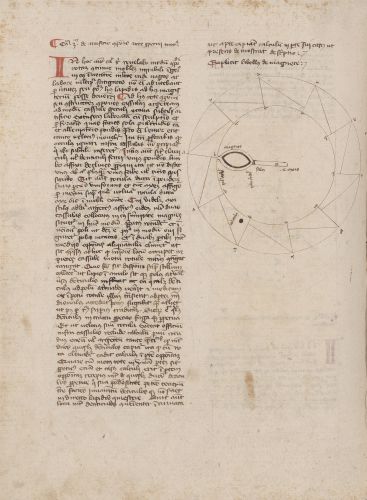Error
"Rota perpetui motus"
The chapter on the perpetual wheel contained in the work of Petrus Peregrinus (also known as Pierre de Maricourt) is the first extended treatise on a perpetual motion device written by a Western author. It is a very important text, as it bears witness to a lively debate on this subject among engineers and scientists of the 13th century. Maricourt introduces the novelty of magnetic force, which he imagines can be used to give continuous movement to a wheel. There are dissimilarities and gaps among the drawings contained in the manuscripts and in the printed editions. In the drawing contained in the 16th-century Italian translation by Antonio Pigafetta, for example, the nails placed one after the other on the edge of the rim at regular intervals of a “bean seed” are replaced by a series of asymmetrical teeth. It is difficult to understand what the original drawing might have looked like. In the printed editions that we have been able to verify, the author of the drawing seems to have taken as reference also the drawing of other types of perpetual wheel, such as the one illustrated on folio 181r of the anonymous Manuscript 34113 in the British Library, dating back to the end of the 15th century. According to Maricourt’s unclear and approximate description, the wheel consists of a larger diameter disc and a smaller iron toothed wheel mounted on the same axis. A magnet is placed in a special support, which infuses the teeth of the iron wheel with its virtues, inducing them to move. When the tooth goes beyond the horizontal line, the magnet pushes it away, triggering a “perpetual flight” and so on for all the other teeth, thus obtaining a continuous rotation.


